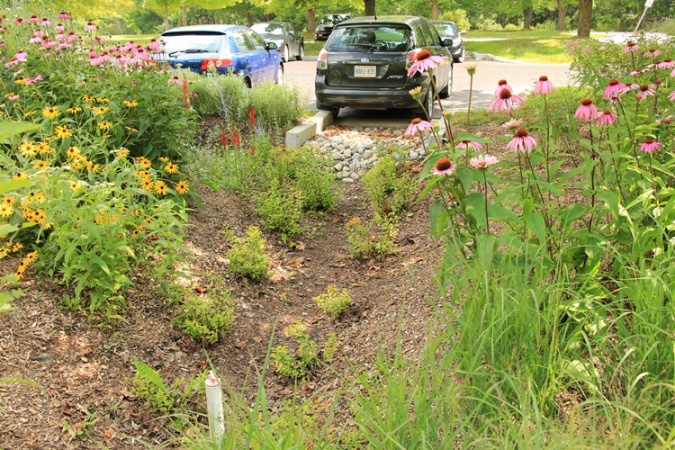Difference between revisions of "Bioretention"
Jump to navigation
Jump to search
Jenny Hill (talk | contribs) |
Jenny Hill (talk | contribs) |
||
| Line 3: | Line 3: | ||
For linear systems, which convey flow, but are otherwise similar see [[Bioswales]]. | For linear systems, which convey flow, but are otherwise similar see [[Bioswales]]. | ||
<div class="col-md-8"> | <div class="col-md-8"> | ||
| + | {{TOClimit|2}} | ||
===Overview=== | ===Overview=== | ||
| Line 85: | Line 86: | ||
===Incentives and Credits=== | ===Incentives and Credits=== | ||
</div> | </div> | ||
| − | |||
| − | |||
| − | |||
| − | |||
| − | |||
| − | |||
| − | |||
| − | |||
| − | |||
| − | |||
| − | |||
| − | |||
---- | ---- | ||
===See Also=== | ===See Also=== | ||
Revision as of 19:33, 21 June 2017
This article is about planted installations designed to capture surface runoff through an engineered soil with subterranean infrastructure.
For simpler, residential systems, see Rain Gardens.
For linear systems, which convey flow, but are otherwise similar see Bioswales.
Overview[edit]
Bioretention cells are the
Bioretention cells are an ideal technology for:
- People who want bioretention
The fundamental components of a bioretention cell are:
- Biomedia - an engineered soil mix
- Planting -
Additional components may include:
- Impermeable membrane to prevent infiltration to soils below
<panelSuccess>
</panelSuccess>
Planning Considerations[edit]
Planning Content
<panelSuccess>
</panelSuccess>
Design[edit]
Design Content
<panelSuccess>
</panelSuccess>
Performance[edit]
Performance Content
<panelSuccess>
</panelSuccess>
Incentives and Credits[edit]
See Also[edit]
External Links[edit]
| SEND US YOUR QUESTIONS & FEEDBACK ABOUT THIS PAGE |
